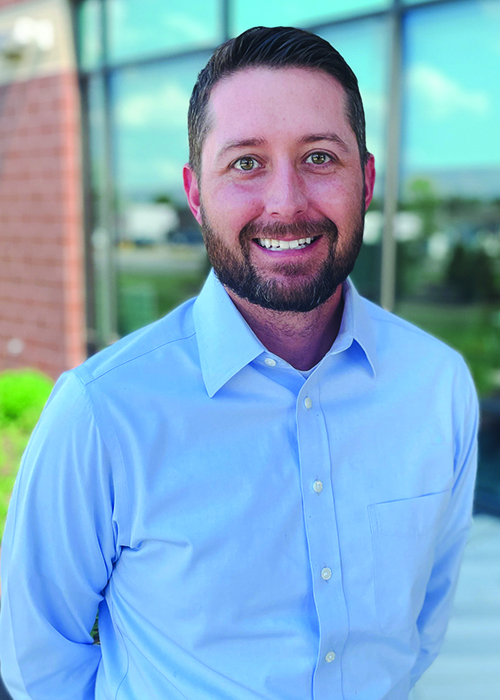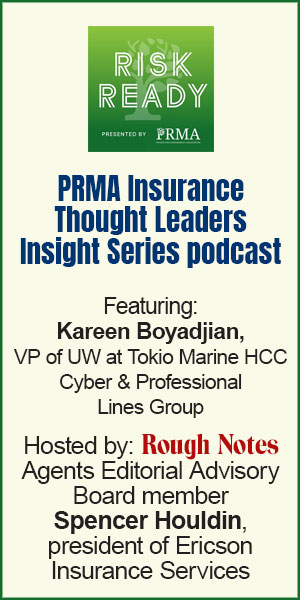Risk management and insurance
under renewed scrutiny of operations
By Joseph S. Harrington, CPCU
Americans seem to love our nation’s nonprofit organizations.
According to Independent Sector, an organization devoted to promoting the interests and best practices of nonprofit organizations, some 57% of Americans surveyed in 2024 indicated they have a high degree of trust that nonprofit organizations will “do the right thing.” For several years in a row, nonprofits have been the only sector to achieve majority support in that regard, surpassing small businesses, the military, philanthropy, government, and the media.
That said, some nonprofits are feeling unloved of late, as they come under increased scrutiny for activities deemed by some to be political in nature. In October 2025, the National Council of Nonprofits launched a “Nonprofit Resilience Fund” that, among other things, provides legal and communications support to help nonprofits combat threats to their funding and operations.
It may be that enhanced scrutiny and enforcement will apply only to organizations involved in public policy advocacy, and that organizations addressing human and community needs in a non-partisan manner have little to fear. That distinction is more easily expressed than established, however. As a result, nonprofit organizations face heightened exposure to risks beyond those they already manage.
New type of risk
In light of the new scrutiny, nonprofits are seeking clarity about the rules of civic engagement. According to Independent Sector, nonprofits have substantially reduced their contact with lawmakers over the past two decades. To reverse the trend, the group advocates the “Bright Lines Project,” an initiative from 2008 to establish clear standards in law for what is permissible public engagement and what is prohibited political activity.
The demands for establishing and maintaining a non-partisan orientation come on top of growing operational risks facing nonprofits and social services for years.
On the liability side, organizations providing residential, home care, or daycare services to impaired populations (children, elderly, or handicapped) face a heightened risk of abuse claims potentially stretching back decades. Services that transport individuals or ship essentials to them are affected by the growing cost of commercial auto insurance.

“Financial stability is paramount for social service organizations to fulfill their missions. Shifts in funding—whether from government, private donors, or grants—create volatility that directly increases risk.”
—Jason Hoover
Senior Vice President, Professional Lines
Kinsale Insurance Company
These liability risks are compounded by the growing property exposure for catastrophe losses and the increased costs and delays for repair and replacement of damaged building property.
For years, the market for nonprofit/social service insurance has been hard, with no signs of getting softer. That’s unlikely to change anytime soon.
“Capacity remains restrained with no signs of softening in the near term,” says Jason Hoover, senior vice president of professional lines for Kinsale Insurance Company. “There are still carriers willing to write in the space, but they’re being much more cautious about what limits they are willing to put up.”
According to Hoover, carriers willing to provide $10 million in general liability limits have become “almost non-existent.” For brokers, he says, it’s now common practice to create towers with $1 million to $5 million layers provided by several different carriers.
Abuse and molestation claims are the “biggest driver” of liability claims for nonprofits that deal directly with human clients, Hoover says. To manage the exposure, Kinsale emphasizes careful selection of risks and limits based on detailed underwriting of each risk.
He says that a disciplined and consistent approach to underwriting has allowed his firm to build market share in the lines it underwrites while avoiding the need for “damage control” that afflicts other carriers. “We’re still underwriting the same classes—plus others—in 2025 that we underwrote in 2015,” Hoover says. “And we plan to underwrite accounts within those classes that fall within our risk appetite in 2035.”
Staffing shortages
Perhaps the greatest challenge Hoover sees to maintaining underwriting consistency is the shortage of trained and willing workers available to nonprofit organizations.
“Staffing shortages are increasing risk exposure, which means a higher cost of risk,” he says. “Employee burnout, contributing to high employee turnover, results in less experienced staff,” he adds. This puts pressure on organizations to maintain consistent quality of care, often leading to more frequent and severe claims.
“The impact shows up in increased insurance costs,” he notes. “The best way for nonprofits to manage this is by focusing on employee retention, training, and strong risk management practices.”
One might think that implementation of artificial intelligence would help relieve burdens and reduce risks in personnel-intensive fields like human services, but Hoover is not so sure. “Our opinion is that risk profiles of most nonprofits and social service organizations are not likely to be dramatically altered by the growth of artificial intelligence,” he explains.
“These organizations rely heavily on personal, human-to-human interaction—community outreach, counseling, case management, and support services,” Hoover adds. “Because the value represented by these qualities is largely built on trust and empathy, AI is unlikely to fundamentally change the underlying risks inherent in these operations.”
As for the renewed scrutiny facing nonprofits and social service organizations, any external disruption to their funding or operations is likely to increase their risk profile.
“Financial stability is paramount for social service organizations to fulfill their missions,” Hoover says. “Shifts in funding—whether from government, private donors, or grants—create volatility that directly increases risk. Sudden changes can disrupt budgets, delay or scale back programs, and make it difficult to maintain adequate staffing. Staffing shortages, in turn, elevate risk by driving higher caseloads and patient volumes.
“This can compromise the quality of care, oversight, and ultimately the effectiveness of services delivered.”
For more information:
Kinsale Insurance Company
kinsaleins.com
The author
Joseph S. Harrington, CPCU, is an independent business writer specializing in property and casualty insurance coverages and operations. For 21 years, Joe was the communications director for the American Association of Insurance Services (AAIS), a P&C advisory organization. Prior to that, Joe worked in journalism and as a reporter and editor in financial services.






